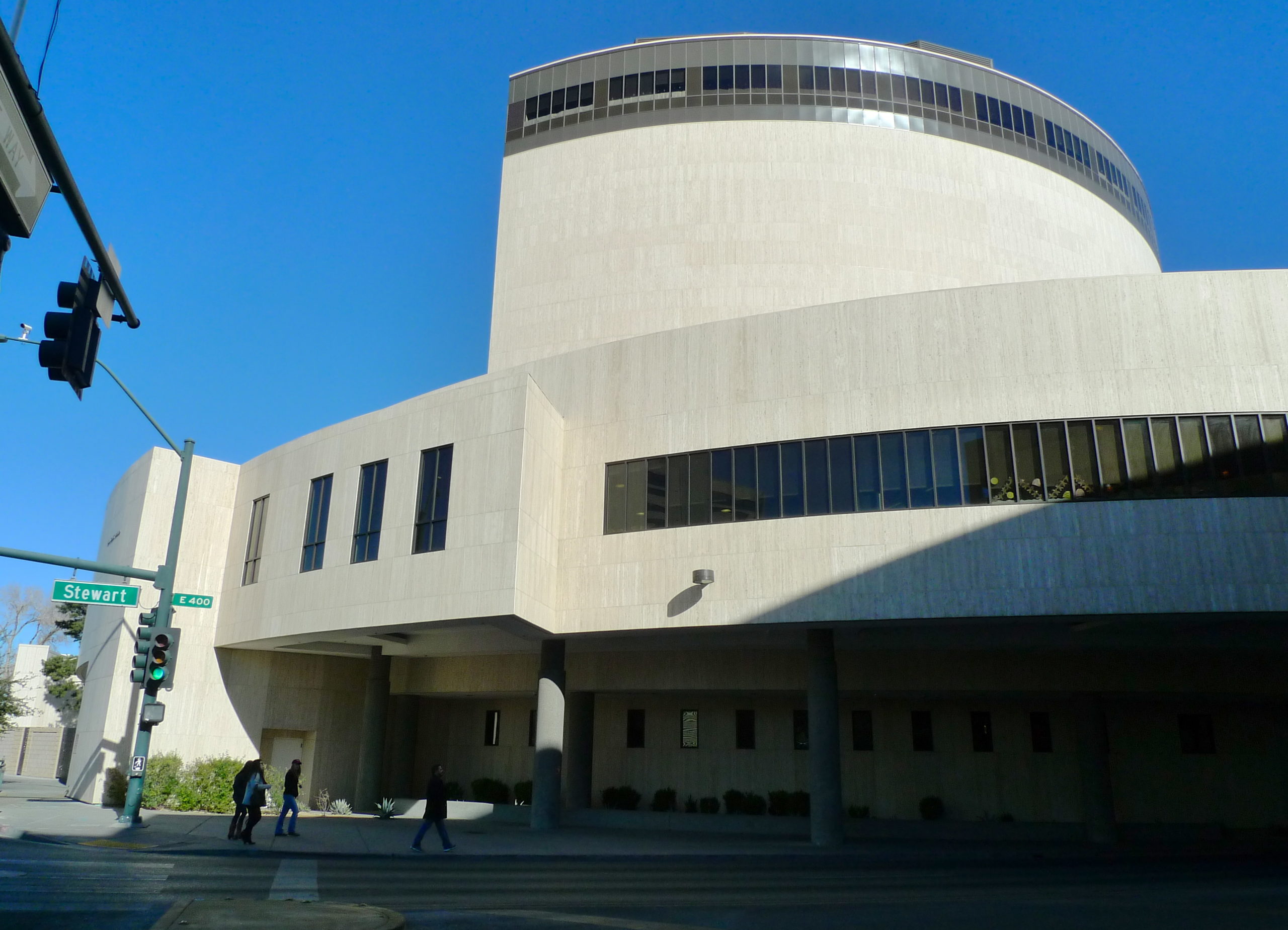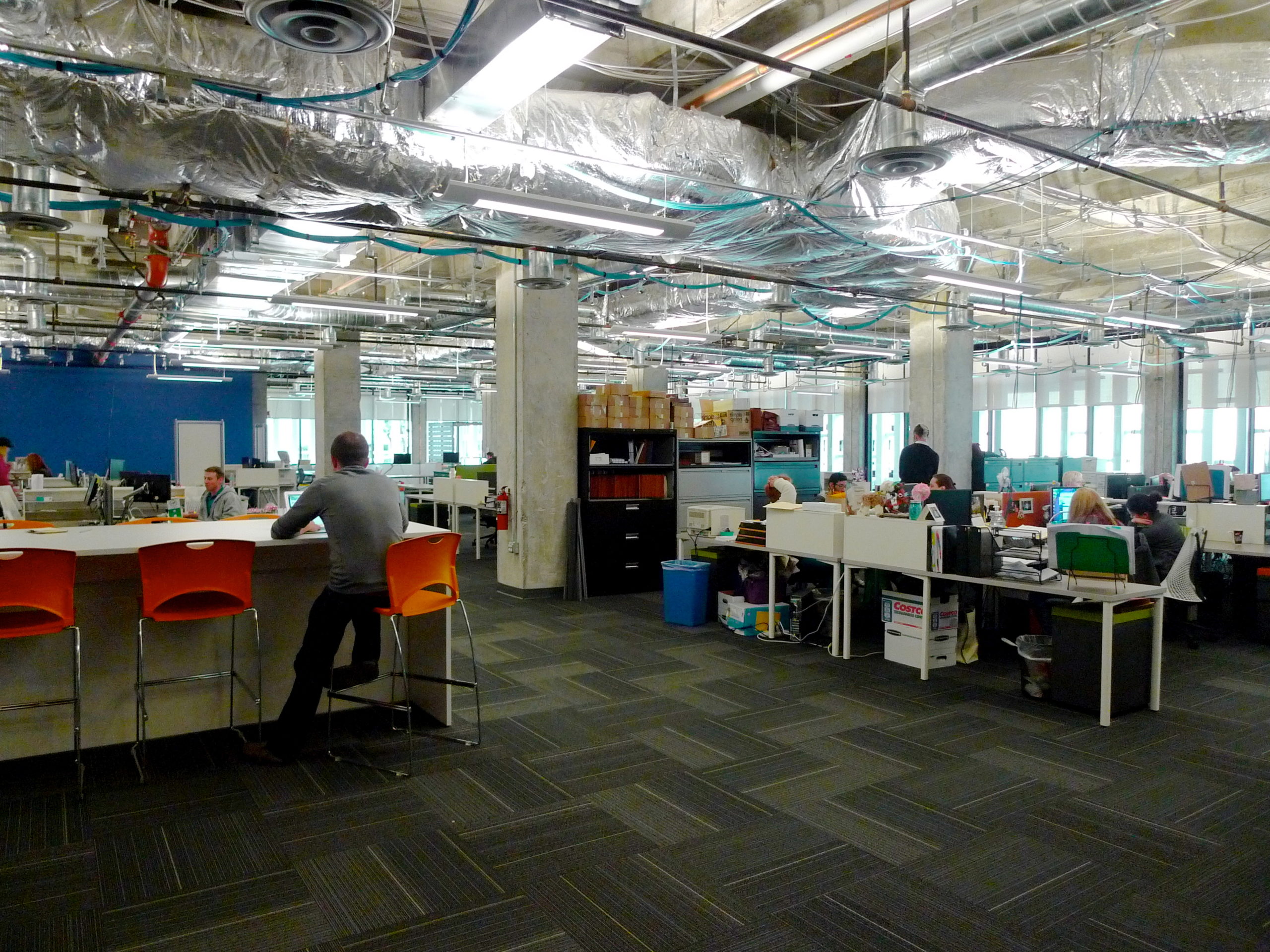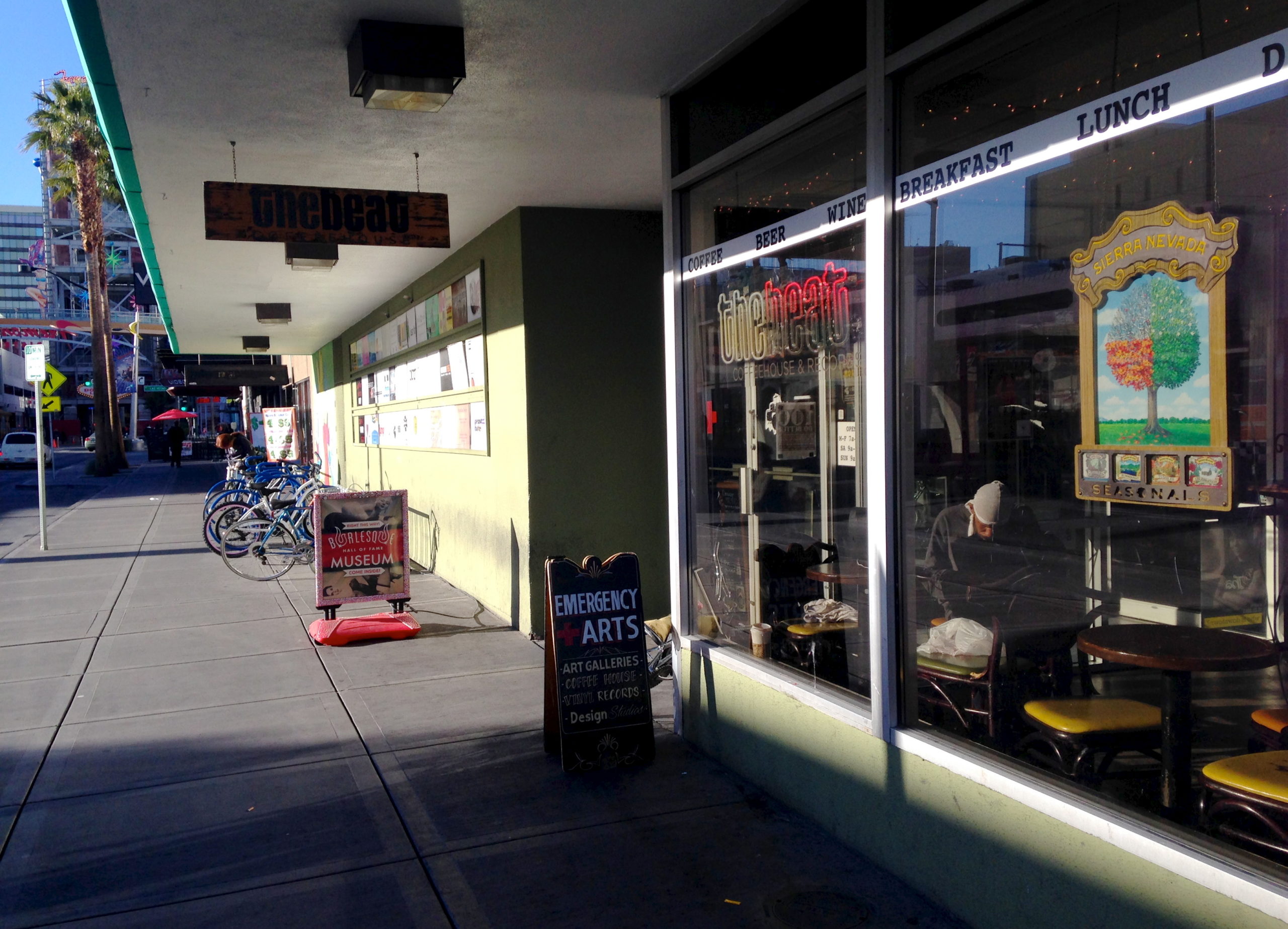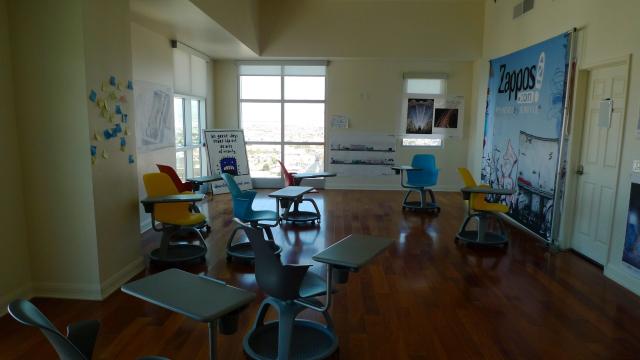I am standing in Zappos CEO Tony Hsieh’s apartment in downtown Las Vegas. He’s not here. A housekeeper is here. And a dozen strangers are here, taking a tour of the Downtown Project, Hsieh’s urban renaissance initiative. A “tour” which, for the most part, takes place right here, in Tony Hsieh’s apartment.
Hsieh’s apartment is actually three units linked together at the luxury high-rise The Odgen (the same place that the Downtown Project has housed me this week — which makes us… neighbours?). Whether or not Hsieh actually lives here or not, the space is set-dressed impeccably as a tech billionaire’s pad. Razr scooters, check. Oversized beanbags, check. Burning Man memorabilia, check. Post-Its everywhere, check. Tread-desk, check.
It’s tempting to Instagram the voluminous collection of booze bottles, fanned out like a frat house across several different bars, but our tour guides instruct us not to document anything. Until we get to a room where the walls are lined with tropical plants: a lush, private Enchanted Tiki Room in the desert. Now, they say, we can social mediate all we want. Everyone does.

The jungle room at Hsieh’s apartment, part of the public tour that anyone can take of the Downtown Project
Why a tour of a swiftly transforming, supposedly walkable neighbourhood takes place in an apartment was a bit perplexing to me at first. Funnily enough, it is actually quite easy to see most of the Downtown Project’s work from the 23rd-floor windows, from the Container Park made from dozens of stacked shipping containers, to colourful murals from a recent festival dancing across empty motels.
But it dawned on me rather quickly why we were taking a tour via renderings, maps and Post-It notes: Up until very recently, there was actually very little to show.
The initiative began in late 2010 after Zappos was bought by Amazon for $US1.2 billion, when Hsieh decided to bring his company from suburban Henderson, Nevada into the city center. He relocated Zappos’ new headquarters to the Death Star-esque City Hall in a 15-year lease, and his roughly 1,500 employees moved in during the fall of 2013. But Hsieh wanted to do more. He proposed a $US350 million, five-year plan (completely separate from Zappos) to invigorate the area, divvying it up between real estate, a tech fund, small businesses, and education.

Zappos employees walking back to work at their headquarters in the former Vegas City Hall building
So far, the Downtown Project itself has created 533 jobs, both in Zappos’ own administration and in the startups and businesses they directly fund. But the Downtown Project would rather demonstrate its success in hours, as the project’s Kim Schaefer explains to me later at their brand-new headquarters in a modern office building a few blocks away. She shows me an actual maths equation to explain their strategy.
Economist Edward Glaeser, who wrote the book Triumph of the City (copies are found in most Downtown Project properties) posited that the right density for a thriving city is about 100 residents per square acre. Downtown Vegas, with hardly any housing, is decades away from achieving this density. And housing is expensive.
So the Downtown Project is instead looking at residents, employees, and regular visitors (they call them “subscribers”) to contribute 1000 annual “collisionable hours:” three to four hours per day of a person walking around/eating at a cafe/drinking at a bar, seven days a week, 52 weeks a year (3 x 7 x 52 = 1092 hours). This can help the area achieve its goal of 100,000 collisionable hours per acre per year, or, as Schaefer broke it down further, 2.3 collisionable hours per square foot per year.

The offices of the Downtown Project, which currently has about 73 employees
In a way, this maths seemed awesomely liberating. Although architects think in this data-driven manner when having to calculate capacity for rooms, I felt like knowing that each square foot of project space had to support 2.3 collisionable hours per year would create a very focused mandate for the design of the project’s spaces. But when I asked about the architects who were overseeing this vision, Schaefer could only give me names of architects and designers for particular projects, like a restaurant or a theatre.
Normally, when cities embark upon this kind of massive redevelopment project, they hire a team of urban designers, planners, architects, landscape architects to create an overall vision, which makes these kinds of specific recommendations for everything from building heights to sidewalk widths. The Downtown Project famously has no master plan (they’ve said they don’t want one), which is encouraging in some ways — and frightening in others.
In fact, when it comes to overall accountability, it seems Downtown Project itself functions more like a startup than a real estate developer, which might be good. They’re simply consistently rolling out ideas to see if they work — ideas that are likely already written on a Post-It in Hsieh’s apartment.
Another interesting thing when it comes to accountability: The team doesn’t look at return on investment, Schaefer told me. Instead, they look at “Return on Community” or “ROC,” which is more subjective. It’s something that’s conveniently difficult to measure, but she’s right: You know it when you see it.

The coffee shop The Beat emerged long before the Downtown Project began, and is housed in a building of art studios and offices
For the last 15 minutes of the official Downtown Project tour, we did end up leaving Hsieh’s apartment and walking two blocks to Emergency Arts, a warren of art-focused studios and startups in a former J.C. Penney. At the front of the space is The Beat, a bustling coffee shop. With windows plastered with event posters and people animatedly talking around tables, that “ROC” is seen in full effect here. But this isn’t a Downtown Project startup; it pre-dates the Downtown Project’s existence and remains independent. These are the projects I’ve started calling “Downtown Organic:” they live alongside the improvements and benefit from them, but they weren’t started with Downtown Project investment money. I’m looking for more of these places so I can talk to their owners.
There was something else that I realised after this tour. Originally, the Downtown Project’s focus was outlined in the initiative’s three Cs: collision, colearning and community. But recently, the Downtown Project swapped the “community” in its motto for “connectedness”. This, I think, is an important difference. Community seems to infer that the changes are being made for the greater good of all the local residents. Connectedness, to me, sounds more like you’re a part of a self-selecting group, almost like a networking opportunity where you have to opt in to participate. If the project is now focused on connectedness, can it still get a solid return on community?
